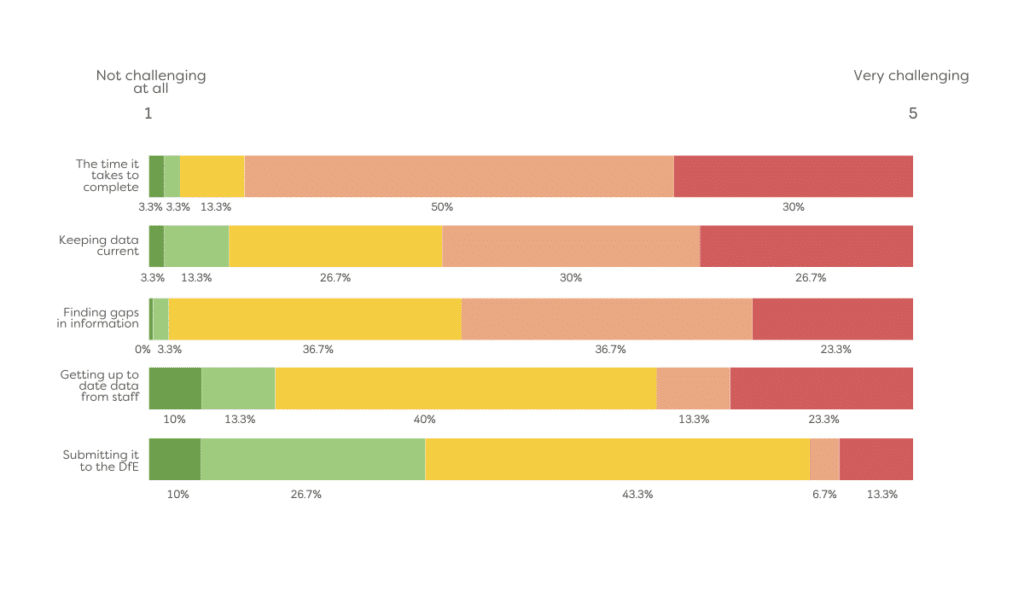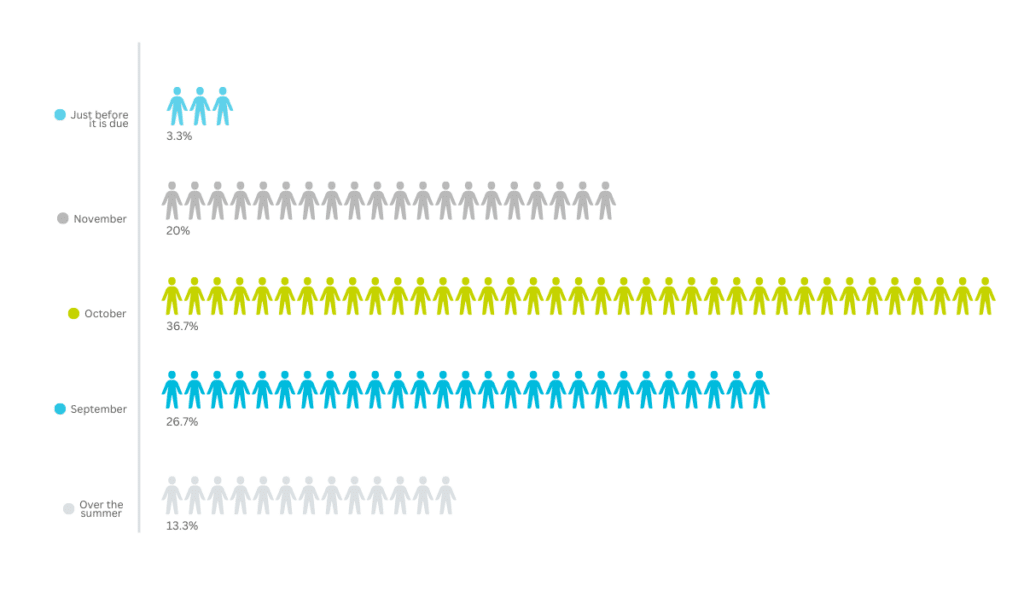Submission day for the School Workforce Census is nearly here. We know just how much time the task can take up, with minimal rewards to your school. (Apart from having the most up-to-date staff information, that is!)
With every autumn term bringing the School Workforce Census, our team are on-hand to support users of our school HR software, Every HR By IRIS, to make submissions as straightforward as possible. But along the way, we’ve been privy to the challenges they’ve previously faced when completing the task. To get a better idea of how widespread these problems are, we sent a short survey to people responsible for their school’s submission (both non-users and users of Every HR).
Read on for the results, plus three tried-and-tested ways you can overcome the common challenges associated with the census.
What is the School Workforce Census?
Since 2010, the School Workforce Census has gathered information on the number and characteristics of teachers and other school staff working in England’s state funded schools. Independent schools, non-maintained special schools, and other further education colleges (FE) aren’t involved in the activity.
Types of workforce data collected in the Census includes staff:
- Gender
- Age
- Ethnicity
- Disability
- Contract information, from role to hours worked
What is the Census used for?
The DfE uses the data to track and assess the education sector’s workforce, supporting decisions it makes around staffing. But for the schools required to collect and submit the data, the activity doesn’t tend to feel as rewarding. And whilst the census does impact workforce-related decisions, it does so in an indirect way that often takes time to be felt. If anything, it’s a burdensome task that just so happens to land in the busy run up to the Christmas holidays!
If you’re reading this, chances are you’re involved in your school’s Census submission in some form. So, you’ll understand that the time the census takes to complete is a common bother. In fact, our survey respondents voted this the most challenging aspect of the task! ‘Submitting it [the Census] to the DfE’ was at the other end of the spectrum, coming out as the least challenging part.
What’s most challenging about the School Workforce Census?

Challenges of completing the School Workforce Census
Coming in as the second most challenging aspect was ‘keeping data current’, with 27.6% of respondents agreeing this is ‘very challenging’. That was followed by ‘finding gaps in information’, which 24.1% felt was ‘very challenging’. In fact, only 3.4% scored this as a two or less (where one is ‘not challenging at all’ and five is ‘very challenging’).
Interestingly, the task of ‘getting up-to-date data from staff’ had the widest variety in scores. Over a third (37.9%) of respondents voted this as a three – neutral – but there were variations either side.
Your thoughts on the School Workforce Census
But it was the answers around preparation timelines that really got us thinking! 13.8% of respondents were early birds who start getting ready for the census ‘over the summer’. Nearly a quarter (24.1%) begin in September, with the largest proportion prepping from October (37.9%).
School Workforce Census day is always the first Thursday of November – so the 7th of November this year. Submission day (the day schools must send their census to the DfE) is on Friday 6th December for 2024. So, for the 20.7% of schools that only start to prep in November (or the 3.4% who said ‘just before it’s due’), we hazard a guess that you’ve got a tried and tested method that makes the task efficient. That, or you thrive from a stressful few weeks!
When do you start prepping for the School Workforce Census?

How to overcome common challenges of the Census
These results and our experience of providing HR solutions to the education sector make one thing clear: the School Workforce Census doesn’t come without a fair few challenges for busy MAT and school HR teams. We’re here to provide you with tangible top tips you need to make the submission as easy and hassle-free as possible!
1. Make it an ongoing task to keep staff data current all year-round
Having to chase information from staff at the last minute is time-consuming, stressful, and can lead to mistakes. That’s where self-service employee portals come in! When employees are accountable for keeping their personal details accurate and current, they’re more invested in adding and updating information as and when it changes. That saves you a job at census time, meaning you can concentrate on collecting the data that employees can’t populate themselves.
2. Have a test run
There’s nothing more painful than uploading your submission to the DfE’s COLLECT platform and being met with an error message! Don’t let your hard work go to waste. A census test run is invaluable for making sure your submission is in the right format and read for Friday 6th December. If you carry out a test run in the weeks before submission day, you’ve got time on your side to correct any errors or find any missing information.
3. Start prepping early
The phrase ‘fail to prepare, prepare to fail’ was almost made for the census. The sooner you get your staff data updated, compiled, and census-ready, the easier it is to populate.
If you’re already using Every HR to support your census submission, remember our team are here for any questions you have. If you don’t, and the census scramble feels all-too familiar, make this the last year you associate stress with the task.
Reach out to us and find out how we can help you change the task for the better.



